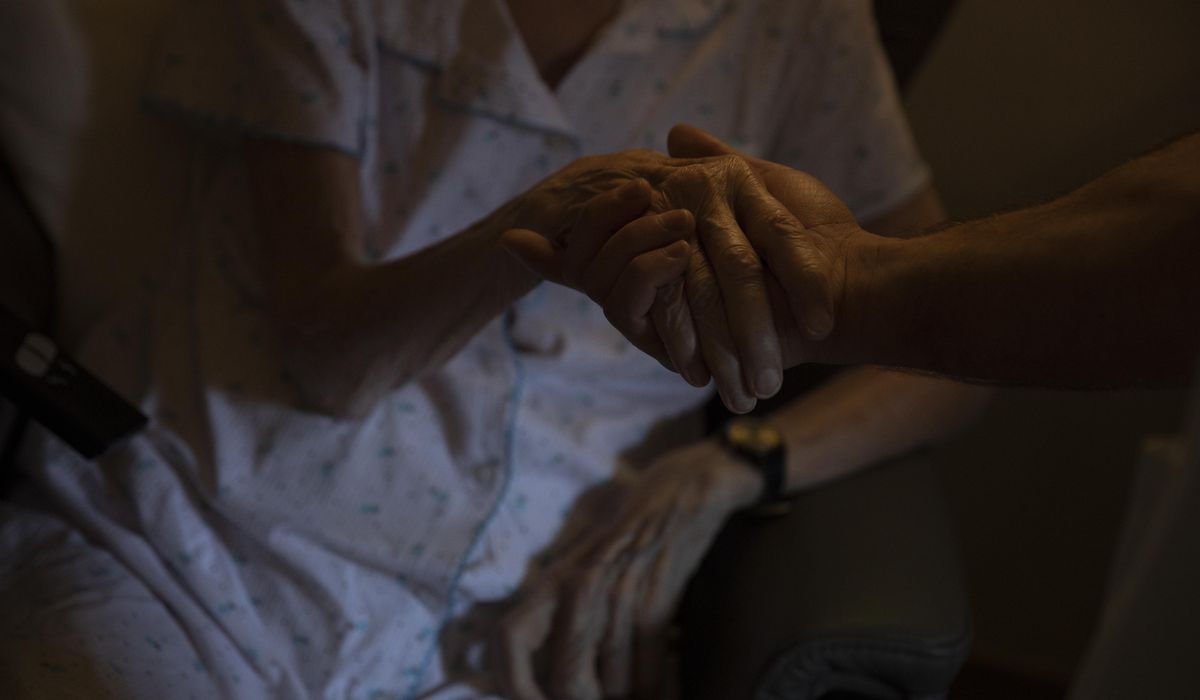Only 8% of the COVID-19 deaths tallied by federal disease-trackers have occurred in people younger than 55, revealing a pandemic that’s fallen remarkably hard on older Americans while younger people fuel the transmission but usually survive.
Risk from COVID-19 increases with age, with Americans older than 85 about 630 times more likely to die or 13 times more likely to land in the hospital from the disease than a young adult, according to a Centers for Disease Control and Prevention analysis that uses people 18-29 as the comparison group.
At the same time as people aged 18-to-29 make up only 0.5% of deaths from COVID-19, that group accounts for nearly a quarter of national cases reported to the CDC, the biggest share of any age group.
It’s a remarkable mismatch that underscores the challenge for public officials seeking to protect one segment of America while tsk-tsk-ing younger folks who feel insulated from the pandemic’s worst effects and want to live freely.
Hospitalizations have broken down along similar lines, with clear age disparities as beds fill up across the country, stretching capacity and wearing out nursing staff amid the worsening crisis.
CDC data examining hospitalizations-per-100,000 finds 667 people in the 65-or-older group and 150 in the 18-49 cohort in the week ending Nov. 14.
It’s a 56% increase amid the older set and a 51% increase for the younger set since Aug. 8, or around the time that colleges resumed their semesters.
Governors, administrators and public health experts warned that transmission among young people would inevitably spill over to grandma, grandpa and other high-risk portions of their communities.
“Most of us in the field have been saying that from the very beginning. That even though younger individuals are less likely to be hospitalized, they are not less likely to spread it and set off chains of transmission that land on vulnerable populations,” said Amesh Adalja, a senior scholar at the Johns Hopkins Center for Health Security.
Deaths are rising as the transmission flares across the country, especially in the Midwest, even as doctors get new therapeutics and a better handle on how to treat the disease. Over 1,600 people died per day, on average, over the last week — double the roughly 800 people who were dying each day a month ago.
The CDC and state officials warned students and other family members to take special precautions before they head home for the holidays, saying casual gatherings are fueling the spread of late and ensnaring vulnerable members of households.
However, some data suggest nursing homes, restaurants and bars, prisons and meatpacking plants remain the key drivers of the surge that U.S. is seeing on the cusp of colder months, when respiratory diseases thrive.
Nursing homes are particularly susceptible, given the concentration of the older people who have underlying conditions. Up to 40% of U.S. deaths have been tied to these settings, as cases within the community manage to slip in through staff or others.
The CDC says children aged 5-17 have the least to worry about in terms of poor outcomes from COVID-19. They’re nine times less likely to be hospitalized or 16 times less likely to die from the disease than the 18-to-29 young-adult comparison group.
Those in their 30s are only four times more likely than those younger adults to succumb to COVID-19, while those in their 40s and age 50-64 are 10 and 30 times more likely to die, respectively.
Chances of death rise sharply after that. Those aged 65-74 are 90 times more likely to die, a risk that grows exponentially to 220 times higher for 75- to 84-year-olds and 630 times higher for those over 85.
A provisional CDC count of 231,000 coronavirus deaths found over 212,000 of them were in people over 55. Only 501 deaths were in people ages 0 to 24, underscoring why some people say schools must be open and prioritized over other public spaces.
Those aged 25-44 accounted for roughly 6,300 deaths and about 12,000 deaths were in those 45-54 years old.
New York Health Department spokeswoman Jill Montag said “age is very strongly correlated with death from COVID-19.”
“Comorbidities, which often track along with age, are also a major factor. When cases decrease among the elderly, deaths tend to decline, and unfortunately cases among the elderly are on the rise again,” she said.
People aged 51-60 accounted for the most cases of COVID-19 from March to June in New York. Persons aged 18-22 contributed the largest share of overall positive tests (16.2%) by September and October, though the health department noted there is a “testing bias” in which students or teachers might have boosted the numbers at the start of the school year.
William Schaffner, an infectious-diseases specialist at Vanderbilt University, noted scientists are learning more about “long haulers,” people of varying ages who recover but suffer long-term, chronic health limitations.
In other words, there is still peril for younger groups.
Still, experts say it’s been a long-running challenge to change behavior among those who are less likely to land in the hospital or succumb to COVID-19. There is a culture of rugged individualism in America that makes it difficult to mandate government controls, while protocols got mixed into politics in a bitter presidential-election year.
Notably, the message from Washington often emphasized individual medical problems over the interconnected, public-health nature of the pandemic.
As a result, younger people “know that the impact in their relative age groups is so much less that they’re very likely, if they get mild symptoms, to recover,” Dr. Schaffner said. “There’s no doubt that this age differential really rules people’s desire to go out and say, ‘I’ll risk it, and what’s the big deal?’ They undervalue the fact they are transmitters, that they can give this virus to others.”
“There’s almost been an indifference,” he said, “to older people dying.”
Officials in Pennsylvania said they’ve been able to bring down case counts among 19- to 24-year-olds since September, when the health secretary pleaded with them to take precautions, but the caseload remains elevated across age groups.
“For that reason, we are working to message to everyone about the dangers of this virus, and to emphasize to everyone the need to protect themselves from COVID-19,” said state Health Department spokesman Nate Wardle.



















